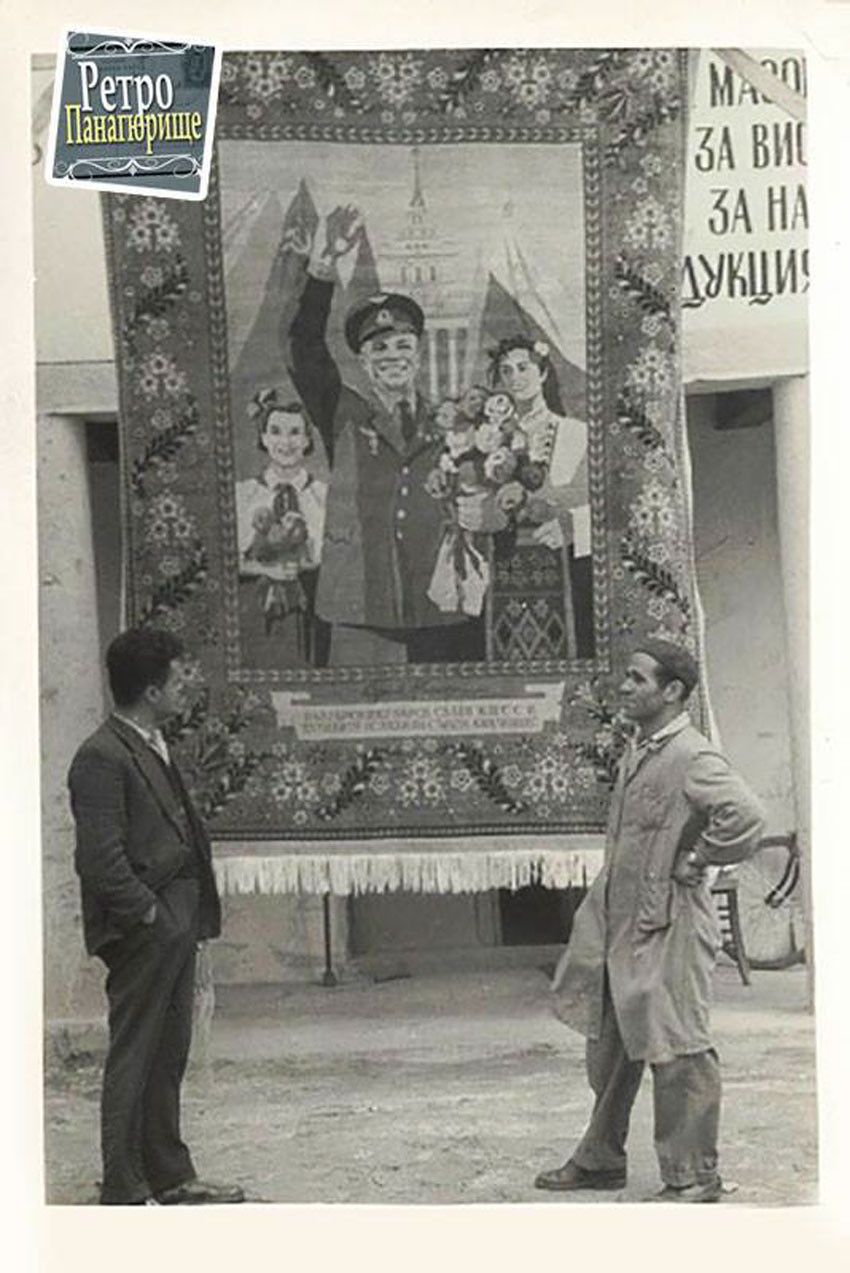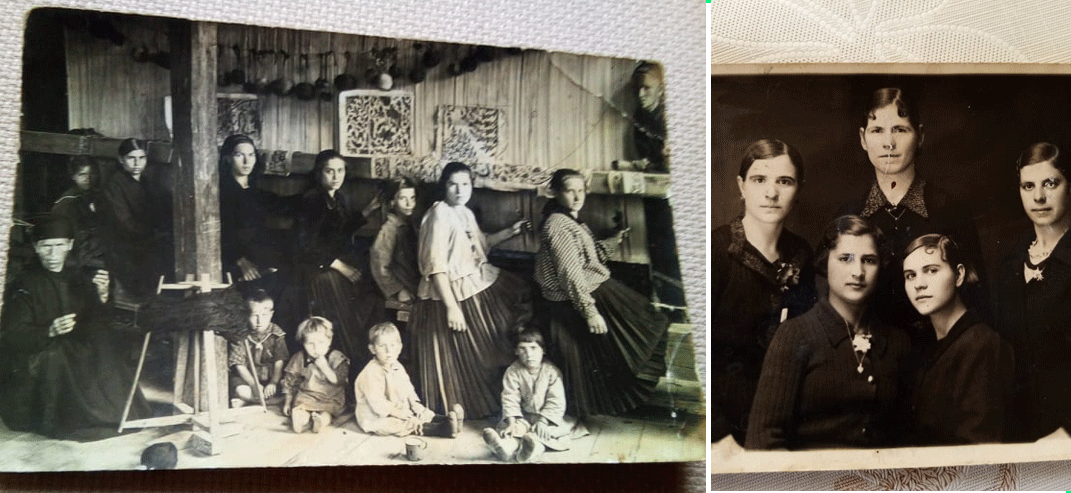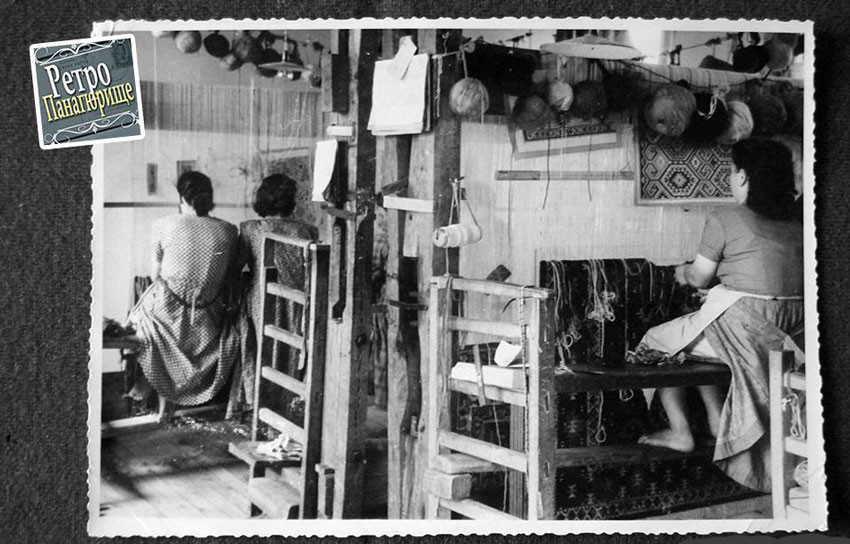The year is 1961. Only a month after his space flight, Yuri Gagarin arrived in Bulgaria, where he visited a number of cities. In two of them - Panagyurishte and Plovdiv, the astronaut received gifts of exquisite beauty - hand-woven carpets with his image.
In the 1960s, two enterprises operated in Bulgaria’s town of Panagyurishte. One of them, the so-called labour production cooperative "Persian Carpet" manufactured, for the distinguished guest, a large carpet sized 2x3 metres.
"Our director gathered us and said, 'Let's make a carpet for Yuri Gagarin,'" recalls Vasilka Petkova-Bairova, then a member of the cooperative's management board. “We had yarn, we had designs, we also had workers and we agreed to do it. People came from all over Bulgaria to see how we make this carpet. It turned out quite beautiful.
The colour paper scheme which is used for the weaving was developed by draftswoman Lushka Nemigencheva. Only one black-and-white photo of the finished carpet is preserved to this day. In the centre of the composition we can see Yuri Gagarin in a military uniform, with a raised hand in greeting, embracing a bouquet of fragrant Bulgarian roses. On one side stands a girl in a pioneer uniform, and on the other - a smiling woman in a Bulgarian national costume.
The carpet was completed in about a month, and the best workers in the company were involved in its production. Among them is Patsa Stoyanova-Yakimova.

"My grandmother was then 38 years old," says granddaughter Diana Georgieva. “At least 15 women have worked on this carpet. Because all the work was manual, very tiring for the eyes and hands, they took turns from early in the morning until very late in the evening”.
For the production of the carpet, all the workers received an award personally from the owner of the Persian carpet enterprise.
"They were awarded a wristwatch for completing the work on time. My grandmother remembered that this was the greatest gift she had ever received in her life,” said Diana Georgieva.
The further fate of this carpet is unknown.

However, it turns out that the Panagyurishte craftswomen made another carpet with the face of the astronaut. Probably this happened in the workshops in one of the villages near Panagyurishte. On it Yuri Gagarin is depicted with a spacesuit, and the carpet itself was sent to Washington. What exactly it looked like remains a mystery because in 1992-93 the enterprise’s archives were destroyed.
The traces of the third carpet, time out the work of the Plovdiv-based carpet masters, have also been lost. Learning that Yuri Gagarin will visit the city, the leadership of Persian Carpet manufacturing enterprise in Plovdiv decided to make a small Persian rug with the image of Gagarin for the solemn day. The best weavers were involved the task as they worked in 3-4 shifts of 4 hours each, without interruption. The old, now deceased master weavers were also helped by the skilful then 19-year-old Ivanka Kocheva.

"My mother does not remember exactly how long the carpet took to make, but they had to react very quickly. That is why they hired the most agile workers to do it in the shortest possible time, because it was a difficult job," said Plamen Kochev, Ivanka's son, tells Radio Bulgaria.
So the beautiful rug was ready in just about 24 hours. The pattern was designed by the company's chief artist Ivan Kolarov, who worked on the astronaut's photography.
"The carpet was approximately 80 by 80 cm large, of the finest wool. Gagarin was depicted on some background, without ornaments around his face, dressed in the usual military uniform, with the service cap, not with his cosmonaut spacesuit”, says Plamen Kochev, retelling his mother’s recollections. "It is said that Yuri Gagarin was most impressed by this gift."
From that moment on, any further information about the carpet remains in the realm of conjecture. A photo of the Plovdiv work of art has not survived to this day.
English version Rositsa Petkova
Photos: Facebook/RetroPanagyurishteThe newest exhibition at the National Museum of Military History in Sofia, 'War and the Creatives: A Journey Through Darkness' opens today, offering free entry as a gesture to those who were unable to visit during the recent renovations. Rather than..
A 5,000-year-long history lies hidden in the ruins of the medieval fortress “Ryahovets” near the town of Gorna Oryahovitsa where active excavations began ten years ago. On this occasion, on November 17, the Historical Museum in Gorna Oryahovitsa..
Just days ago, archaeologists uncovered part of the complex underground infrastructure that once served the Roman baths of Ratiaria - one of the most important ancient cities in Bulgaria’s northwest. Founded in the 1st century in the area of..

+359 2 9336 661
